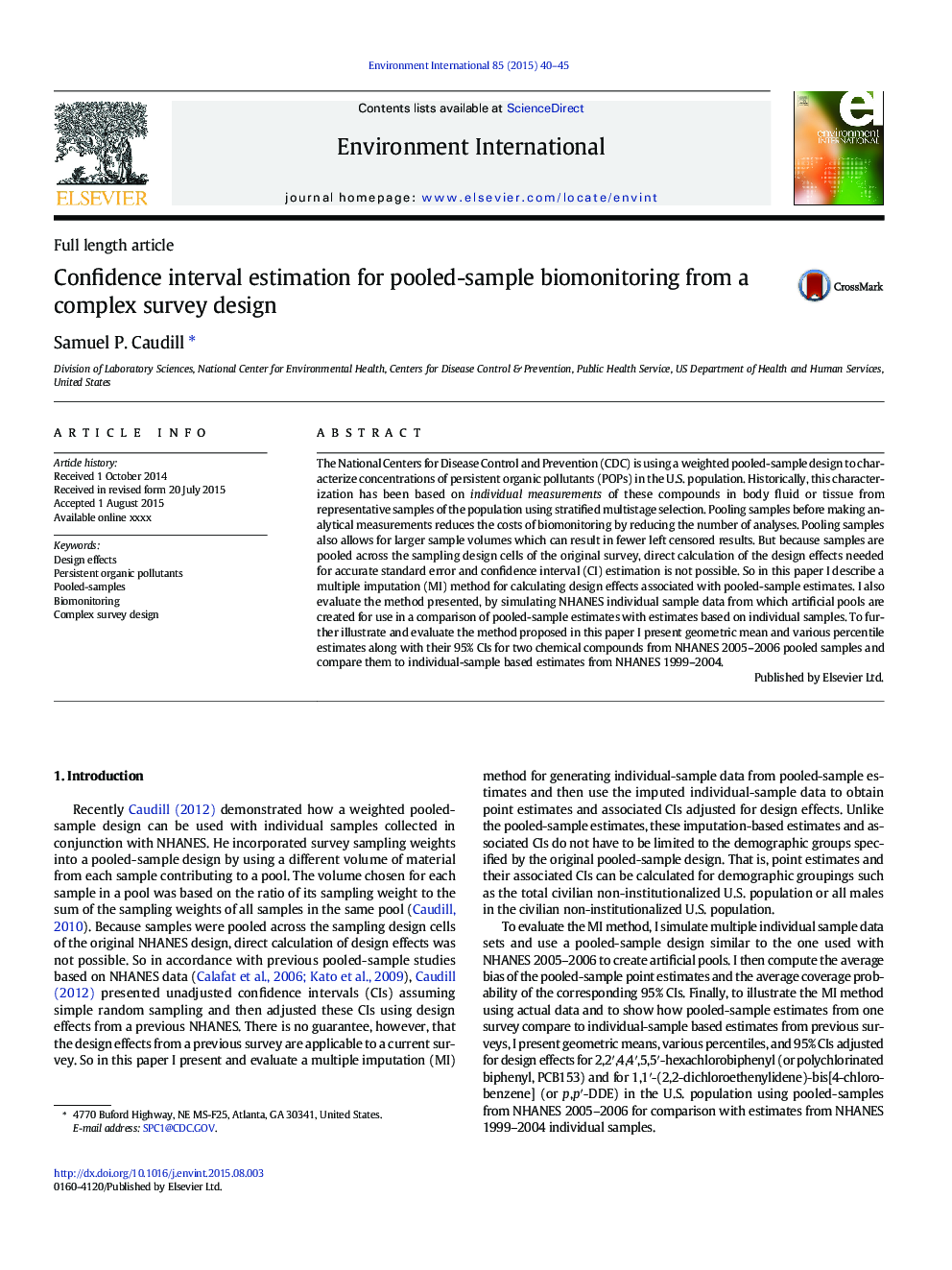| Article ID | Journal | Published Year | Pages | File Type |
|---|---|---|---|---|
| 6313549 | Environment International | 2015 | 6 Pages |
Abstract
The National Centers for Disease Control and Prevention (CDC) is using a weighted pooled-sample design to characterize concentrations of persistent organic pollutants (POPs) in the U.S. population. Historically, this characterization has been based on individual measurements of these compounds in body fluid or tissue from representative samples of the population using stratified multistage selection. Pooling samples before making analytical measurements reduces the costs of biomonitoring by reducing the number of analyses. Pooling samples also allows for larger sample volumes which can result in fewer left censored results. But because samples are pooled across the sampling design cells of the original survey, direct calculation of the design effects needed for accurate standard error and confidence interval (CI) estimation is not possible. So in this paper I describe a multiple imputation (MI) method for calculating design effects associated with pooled-sample estimates. I also evaluate the method presented, by simulating NHANES individual sample data from which artificial pools are created for use in a comparison of pooled-sample estimates with estimates based on individual samples. To further illustrate and evaluate the method proposed in this paper I present geometric mean and various percentile estimates along with their 95% CIs for two chemical compounds from NHANES 2005-2006 pooled samples and compare them to individual-sample based estimates from NHANES 1999-2004.
Related Topics
Life Sciences
Environmental Science
Environmental Chemistry
Authors
Samuel P. Caudill,
